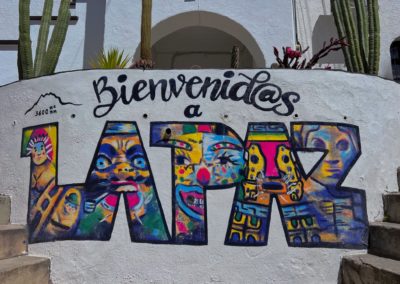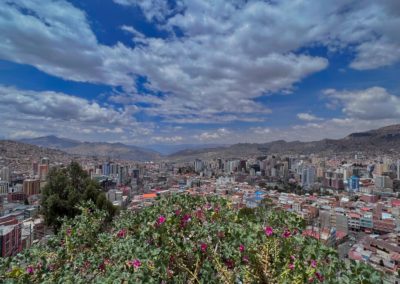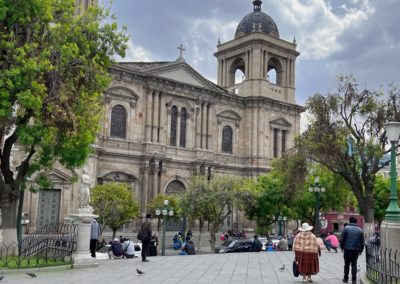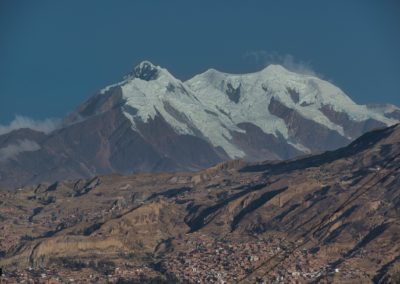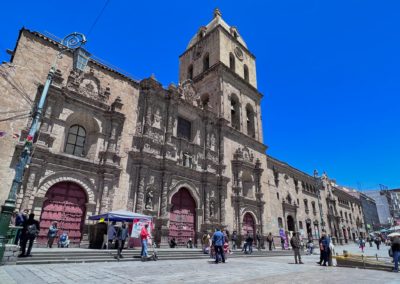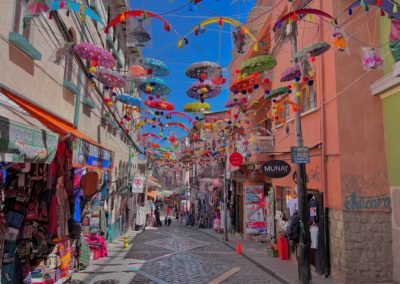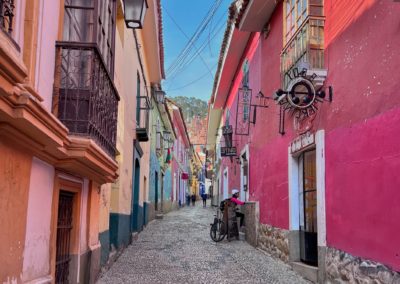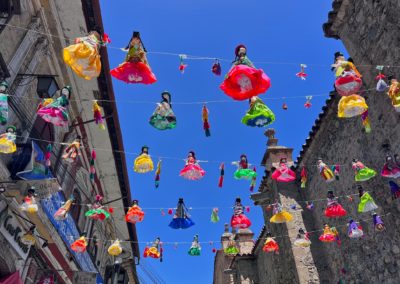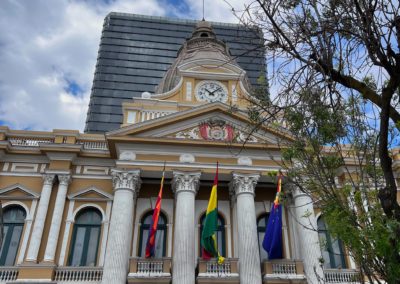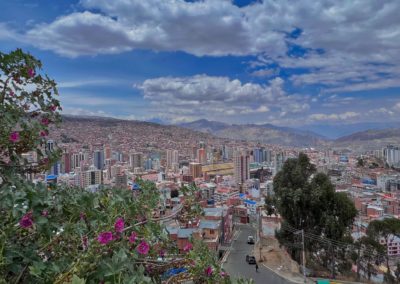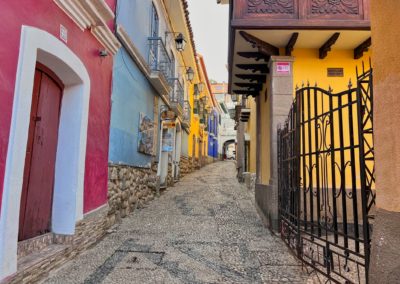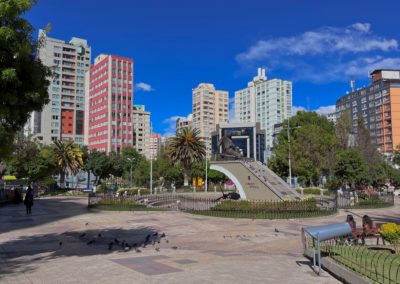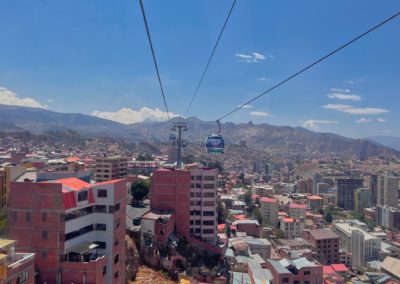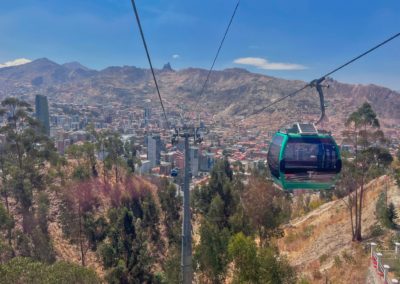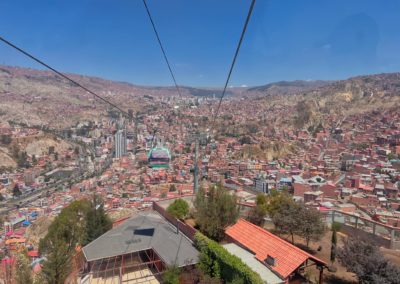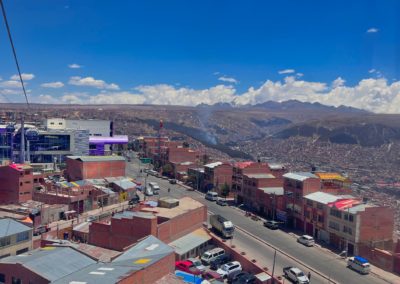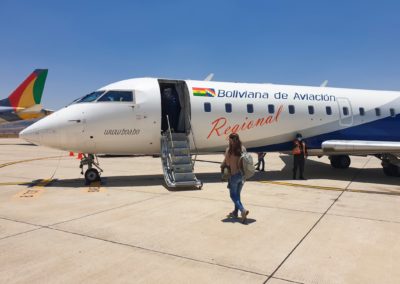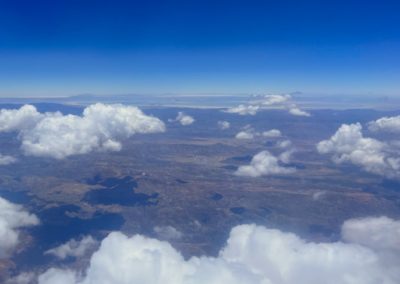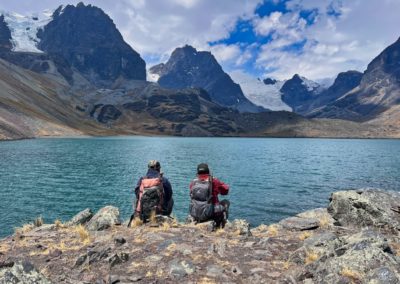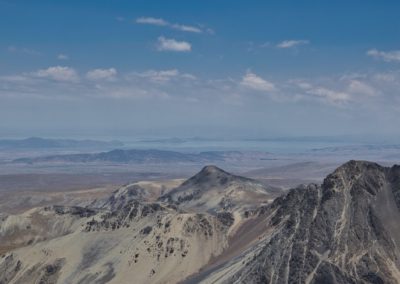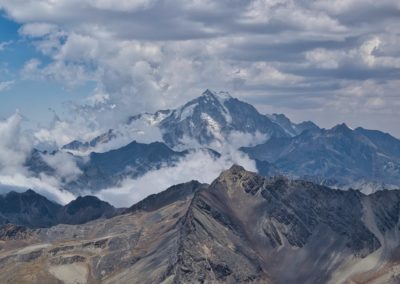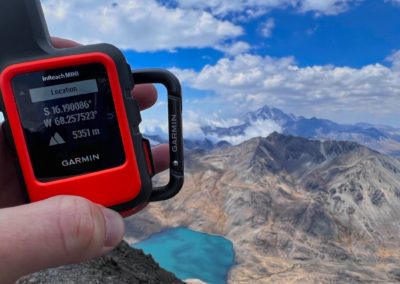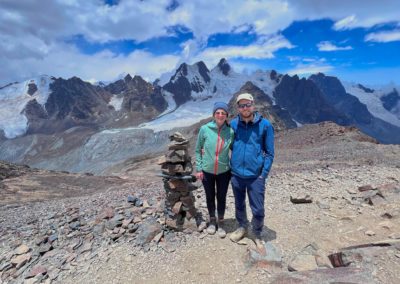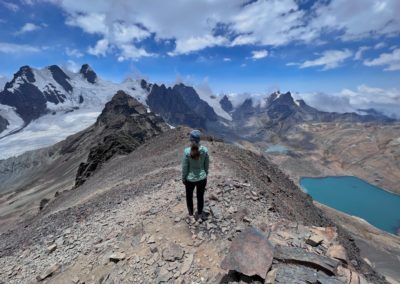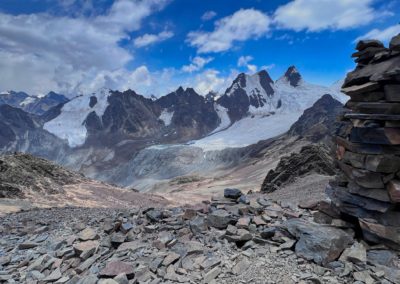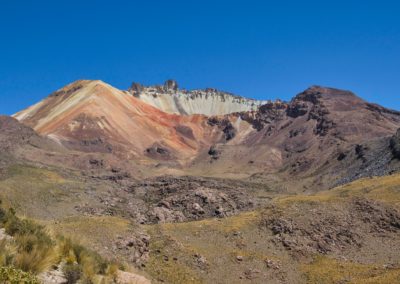La Paz
La Paz
After four months in North America, we are flying from Toronto to La Paz. Bolivia has been on our list for a long time now and it is finally time to discover this fascinating country in the heart of South America. We are especially looking forward to having a visitor: Julien, a longtime friend of Marion, joins us for part of the trip. La Paz, the administrative capital of Bolivia, impresses by its unique topography, its amazing network of cable cars and the kindness of its inhabitants. But we also discover the darker sides: altitude adaptation, traffic chaos and sometimes insufficient food hygiene.
A city like no other
About two million people live in La Paz and the neighboring city of El Alto. Located in a basin of the Bolivian high plateau, the neighborhoods extend at an altitude rising from 3200 and 4100 meters. Our hotel is located in the lively middle-class neighborhood of Sopocachi, not far from the city center, at 3600 meters above sea level. We take the first two days easy and let our bodies get used to the altitude and drink plenty of the famous coca tea to help us adjust to the altitude. However, we cannot avoid the classic symptoms such as headaches and shortness of breath.
Three days after our arrival, Julien arrives in La Paz. What a joy to see each other again in such a place on the other side of the world. We explore the city together and visit the famous Mercado de la Brujas (witches’ market), the Plaza Metropolitana Murillo or the Calle Jaén. At the Killi Killi viewpoint, we overlook this amazing city, with Mount Illimani, which reaches 6438 meters, in the background.
The adaptation to the altitude and the change of diet cause us a little more trouble than expected. So we extend our stay in La Paz for a few days, meet the friendly and a bit chaotic Doctor Igor, and slightly adapt our travel plans. Next steps: a few quiet days in Sucre, then the long-awaited tour from Tupiza to Uyuni. More details about these trips to follow.
Our highlights
Julien's visit
Mirador Killi Killi
Plaza Murillo
Mercado de la Brujas
Calle Jaén
Café con Pan
The Writer’s Coffee
Café del Mundo
YATI Restaurant
Ali Pacha
The Carrot Tree
Manq'a Restaurant
Mi teleférico
La Paz has the largest urban cable car network in the world. The first line was inaugurated in 2014 with the aim of connecting the city of El Alto, located on the high plateau, to the city of La Paz, located in the canyon, and thus combating the daily congestion of the streets of La Paz.
Today, 36 stations on 10 lines are in operation. For ease of orientation, each line has a specific color, and all gondolas and stations are matched. These modern facilities from the Doppelmayr company contrast sharply with the rustic urban landscape of La Paz.
A one-way ticket costs 3 bolivianos, the equivalent of only 40 Swiss centimes. Cheap, comfortable and efficient: no wonder that this means of transport is very popular. For us too, this is by far the best way to take a city tour in La Paz and to become aware of the dimension of this extraordinary city.
Our highlights
Cable car network
City tour
Unique experience
Views of the city
Hike to Pico Austria
About two weeks later, we went again to La Paz for a short visit before going to the Sajama National Park. After quite poor experiences with Bolivian long-distance buses and cabs, we opt for a short domestic flight from Sucre. This time we stay in a modern and comfortable hotel in the new neighborhood of San Miguel a little lower in La Paz. To our surprise, we find a Swiss restaurant run by an Aargauer, the “Chalet La Suisse”. A delicious (vegetarian) Züri Gschnätzlets with Röstis makes Philip extremely happy and brings him a little back home in this distant Bolivia.
The aim of our stay in La Paz: the hike to “Pico Austria”, a 5350-meter-high mountain in the Cordillera Real, about a two-hour drive away from La Paz. Our cheerful and chatty hiking guides, Pedro and José from the “Bolivian Mountaineering” agency, make us live an unforgettable adventure. A perfect organization, even with a coffee that Pedro takes out of his backpack during the first short break and which particularly delighted Marion. We are also accompanied by Mark, a friendly Californian in his thirties, for whom this is an acclimatization hike for his future ascent of the Huayna Potosi (6088 m).
The hike requires quite a lot of effort. From 5000 meters of altitude, it becomes more and more difficult to breath and the rhythm slows down. But once we reached the top, what a reward, a fantastic 360° view awaits us: below, the Juri and Chiar Khota lagoons, on the horizon the Titicaca lake and the Altiplano, around us the Condoriri mountain range, the giant Huayna Potosí and numerous glaciers. What an achievement, it is a great satisfaction and joy to stand on the summit of a 5000 meter peak.
Our highlights
Pico Austria Hike
Mountain scenery
Our guides Pedro & José
Bolivian Mountaineering
Huayna Potosí
MET-Hotel
Chalet La Suisse
Fellini Restaurant
Café Kuchen Sur
Cafeína Coffee Shop
Librerías LECTURA
Our most beautiful hikes in Bolivia in detail

